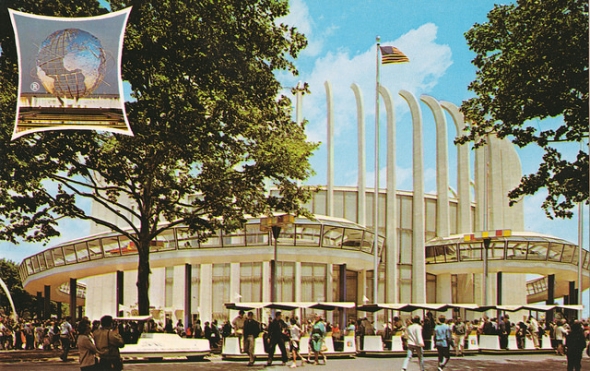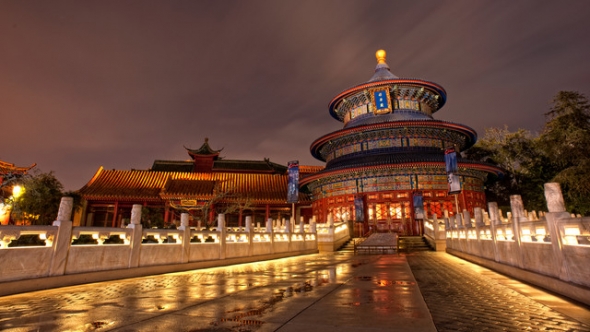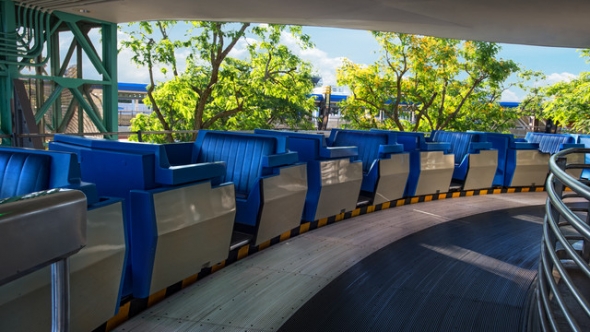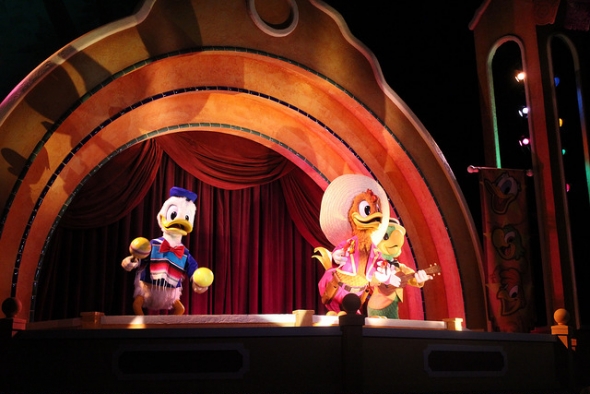You down with BIE?
Image: Sam Howzit, Flickr (license)
Amazing as this proposition is to consider, no country felt the onus to join Disney’s new enterprise. Their governments offered a multitude of reasons to explain the universal rejections. Some parties worried that by joining an unsanctioned institution masquerading as a de facto World’s Fair, they might incur the wrath of the International Exhibitions Bureau (BIE), the governing body of official World’s Fairs.
While the idea seems quaint today, losing World’s Fair privileges caused a great deal of consternation during the second half of the 20th century. Amusingly, the 1964 New York World’s Fair faced the same issues since it too was unsanctioned. The bylaws of the BIE stated that such events could only last for a year. New York’s event actually ran for parts of 1964 and 1965. Meanwhile, the World Showcase at EPCOT Center would remain open constantly. That was one of the core concepts of the facility. The BIE rattled its saber about severe punishment for countries who stepped out of line. At the time, their threats had some teeth.
Bureaucracy of that sort was only a small part of the problem, though. Actual political bureaucracy was a larger problem. Every potential country needed to garner the favor of a majority of their elected officials when applicable or royalty/unelected rulers in other cases. That task is never easy in any day or age.
Even when governing bodies agreed, they also needed to form alliances with popular businesses from their regions. Disney emphasized commercialization prior to the launch of the World Showcase. Without major corporations onboard, the stores wouldn’t seem aptly reflective of the countries they represented. While commerce was king, the negotiations also required a political stamp of approval. Imagine trying to get the American government to agree to an endeavor but also needing the approval of major corporations like Google, Facebook, and Apple. That’s far too many conflicting interests to bring together at once.
Finally, Disney just couldn’t win the public relations battle. While we all know and appreciate the legacy and importance of Epcot today, foreign governments of the mid-1970s didn’t understand the sales pitch well enough to waste political capital supporting it. Disney as a brand was already unimaginably popular worldwide, but EPCOT Center wasn’t selling Mickey Mouse at all. To the contrary, it was stubbornly standing apart from that image, instead highlighting international cultures. The potential countries didn’t understand why they needed that type of PR in what was up until very recently Florida swampland.
Disney’s blueprint for the World Showcase
Image: Disney
In 1975, Disney delivered a message to shareholders that brimmed with optimism. It highlighted all the eventual wonders of the World Showcase at EPCOT Center. Park planners believed that “the World Showcase will communicate the culture, heritage, history, technology, trade, tourism and future goals of the participating nations.” More than 40 years later, they’re largely right about what transpired. It was the getting there that hurt.
The shareholder message indicated a 1979 debut for the World Showcase. As you know, that was three years premature. And their original goals fell by the wayside. Disney announced:
“These dynamic structures will face each other across a Courtyard of Nations, where there will be an outdoor theater for performances by international celebrities and entertainment groups, and where parades, pageants and special events will be staged by entertainers from the participating nations.
“Although these national pavilions may vary in size, each will enjoy equal façade exposure to the guest. The entire complex will be tied together by a Disney people-moving system that will offer visitors a preview look into each attraction.
Image: Disney
“Unlike a world's fair, it will offer participating countries a permanent installation for such features as themed restaurants and shops, product exhibits, industrial displays, cultural presentations, a trade center, and even special facilities for business meetings. A major part of each pavilion will be a Disney-designed ride or attraction which will give guests a foretaste of an actual visit to the country. National musical groups or other performing artists could present special entertainment on a continuing basis.”
As you flip through your mental rolodex about the validity of these claims, consider that Epcot does feature international celebrities and entertainment groups on a regular basis. They also have outdoor theater performances thanks to talented cast members. The Courtyard of Nations with “equal façade exposure” is also largely accurate. Many of the merchandising and cultural claims are also valid.
Where Disney loses points for prophecy is with the Disney-designed attractions. You can count on one hand the number of rides offered, and the situation only looks marginally better if you generously describe the outdated country-based films at some Pavilions as attractions, too. And while that might sound nitpicky, it underlines where Disney miscalculated the interest from foreign parties.
Wait, I thought this was free
A different part of Disney’s anticipated sales pitch is where they ceded any chance of enticing countries and international businesses to participate. From Disney’s perspective, they were building a permanent World’s Fair. One of the presumed aspects of the pavilions at such exhibits was that the participants all paid their own way.
In Disney’s estimation, “Each participating nation will be asked to provide the capital to cover the cost of designing, developing and constructing its attraction and/or ride and all exhibits, as well as the Pavilion itself. It will also have the responsibility for funding the housing for its employees in the International Village. Its land lease will cover the cost of maintaining the attraction for a minimum of ten years.”
They felt this request was perfectly reasonable, as it was in line with standard World’s Fair practices. The potential countries involved already didn’t like the idea of upsetting the BIE. Paying to have a tentpole Pavilion in central Florida made no sense to anyone. The Orlando of the mid-1970s wasn’t what it is today, the unofficial theme park tourist capital of planet Earth. Countries were already shaky on the premise. The fact that it came with a rather significant price tag proved to be the deal breaker.
Disney could have persuaded some countries right from the start if they hadn’t tried to stick these governments with the bill. That’s the explanation for why none of the 31 countries said yes. Disney had to use different methods to persuade them, and even those weren’t certain to work. As late as 1979, Disney warned shareholders that the World Showcase could open with only five nations as participants. That’s not much of a World Showcase. In fact, it’s barely half of the number of countries in Western Europe.





Comments
Interesting article! It certainly puts the conversion of Maelstrom into Frozen in a new light. By placing such a popular property into World Showcase, Disney is likely hoping for increased visits (and revenue) for EPCOT. If business gets better, it could be a deciding factor for nations still on the fence about pavilions of their own.
Disney doesn't seem to know what to do with Epcot. Futureworld just closes things and doesn't replace them. It's kind of sad to walk around there. I don't have any ideas for that except just don't make the place seem like a graveyard.
The Food and Wine festival proves how popular a world showcase can be.They should just bite the bullet and pay for more countries. There don't even have to be rides, just more culture. I think additions of countries could reinvigorate the park.